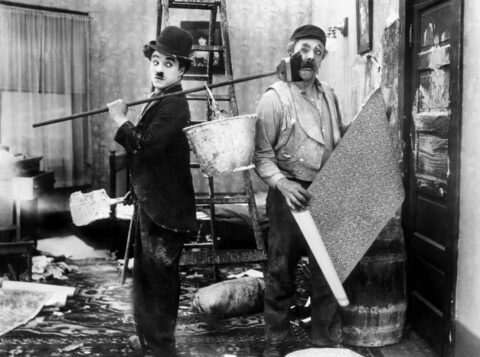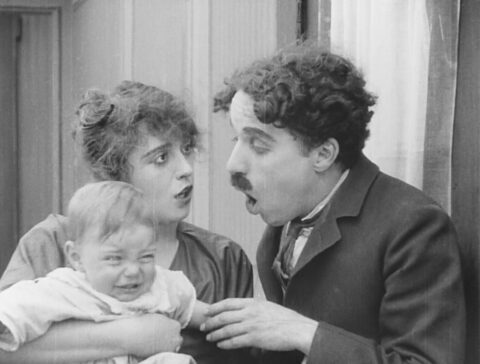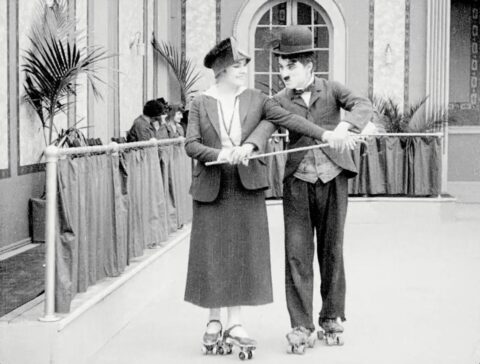despite charlie chaplin’s statement about his work, and the fact that city lights (1931) does in fact have a park, several policemen and a pretty girl, this film places the issue of class front and center in its opening scene and then plays out that theme, in different variations, for 87 minutes. it begins with some pompous dignitaries in formal dress about to dedicate a larger-than life size neoclassical statue of three figures titled peace and prosperity. the officials consist of politicians, businessmen with their wives, and the police. this is clearly a good cross representation of the ruling class in the us and chaplin beautifully uses them as one collective “straight man.” the crowd behind them – the “little people” – are there as a sounding board, amplifying and physically playing out the symbolic language of the assorted elites at the level of the street. they will presumably carry the message of peace and prosperity to those less fortunate who could not attend.
peace and prosperity is clearly an ironic title considering this was the second year of the great depression. it was also the era where war-drums from europe had found their beat. the nazis would take control of germany within two years and start the war machinery rolling; the japanese and the italians had militarized, nationalist governments ready to use force to realize their economic and colonial ambitions; spanish democracy was withering under the weight of fascist populism; and the americans after wwi were ready to impose a new world order with themselves at the head of the table. many writers, intellectuals, and analysts of the period realized it was only a matter of time before the festering aftermath of wwi exploded, bringing another world war. the thirties were in some respects similar to our era. it was a period defined by political polarization, instability, and rabid disparities of wealth and education; there was also a strong faction of nationalists spinning webs of fantasy, control, and power. this is the context in which peace and prosperity opens city lights.
the statue in the film fits the traditional neoclassical aesthetic, an art form that comes ready made for autocrats and their cronies. that is why during revolutions those statues are among the first things to come down, to be set on fire, to be urinated on, or to be thrown in the nearest river. peace and prosperity presents a tableau with a soldier holding a sword while another man with a hand up signals peace; a young woman dressed in traditional greek robes stands by ready to choose between her two suitors. the tableau espouses male heroism and reason balanced by the eternal mother/fertility goddess as provider, and arbiter, in harmonious balance – a pastiche of european sculpture from an earlier period.
the film was made four years after the advent of sound and is one of the last hybrid films that was shot as a silent with a soundtrack added later. in the early thirties sound and music were considered add-ons to the narrative and chaplin was the first film artist to use sound creatively, re-articulating one of the conventions of music hall and vaudeville – the use of musical instruments to parody human folly. he does it by turning what americans like to call the “boilerplate speech” into music. the society lady is “played” by a piccolo, the overbearing boss is “played” by a trombone, and the mayor is “played” by a kazoo – chaplin brings that technique back for one final go-around before taking a bow… read the full article at cineaction by dd
 a visual collective outlet of inspiration
a visual collective outlet of inspiration

